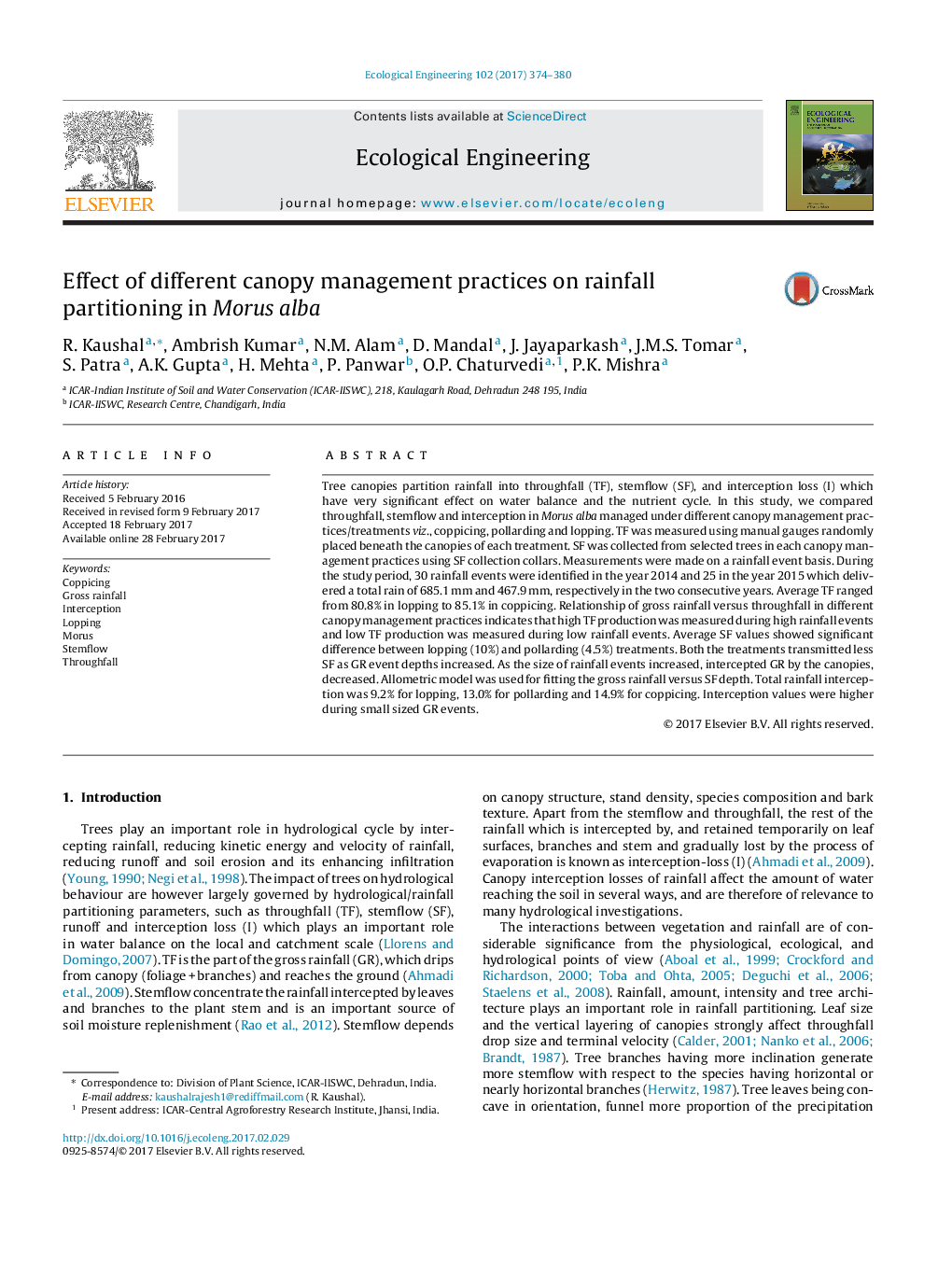| Article ID | Journal | Published Year | Pages | File Type |
|---|---|---|---|---|
| 5743781 | Ecological Engineering | 2017 | 7 Pages |
Tree canopies partition rainfall into throughfall (TF), stemflow (SF), and interception loss (I) which have very significant effect on water balance and the nutrient cycle. In this study, we compared throughfall, stemflow and interception in Morus alba managed under different canopy management practices/treatments viz., coppicing, pollarding and lopping. TF was measured using manual gauges randomly placed beneath the canopies of each treatment. SF was collected from selected trees in each canopy management practices using SF collection collars. Measurements were made on a rainfall event basis. During the study period, 30 rainfall events were identified in the year 2014 and 25 in the year 2015 which delivered a total rain of 685.1Â mm and 467.9Â mm, respectively in the two consecutive years. Average TF ranged from 80.8% in lopping to 85.1% in coppicing. Relationship of gross rainfall versus throughfall in different canopy management practices indicates that high TF production was measured during high rainfall events and low TF production was measured during low rainfall events. Average SF values showed significant difference between lopping (10%) and pollarding (4.5%) treatments. Both the treatments transmitted less SF as GR event depths increased. As the size of rainfall events increased, intercepted GR by the canopies, decreased. Allometric model was used for fitting the gross rainfall versus SF depth. Total rainfall interception was 9.2% for lopping, 13.0% for pollarding and 14.9% for coppicing. Interception values were higher during small sized GR events.
